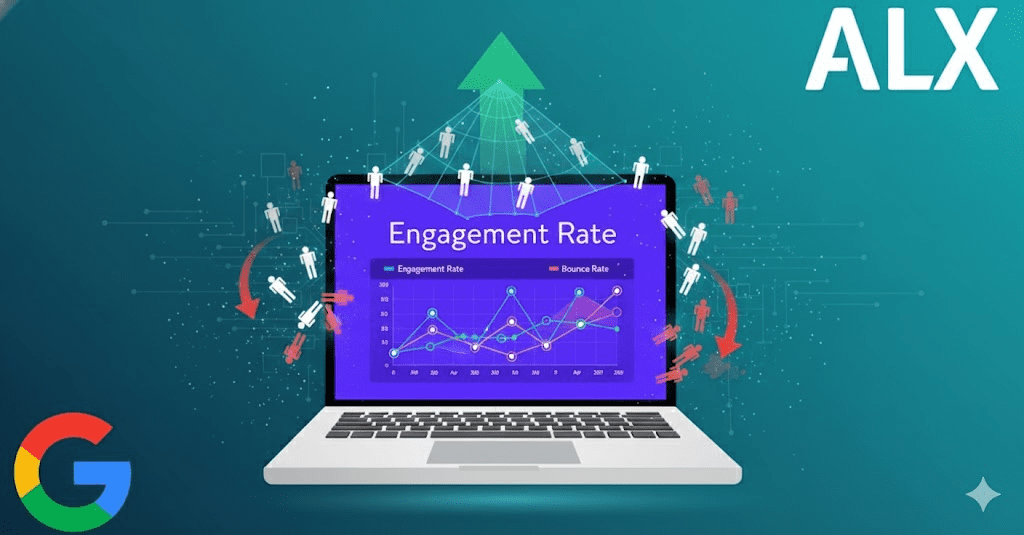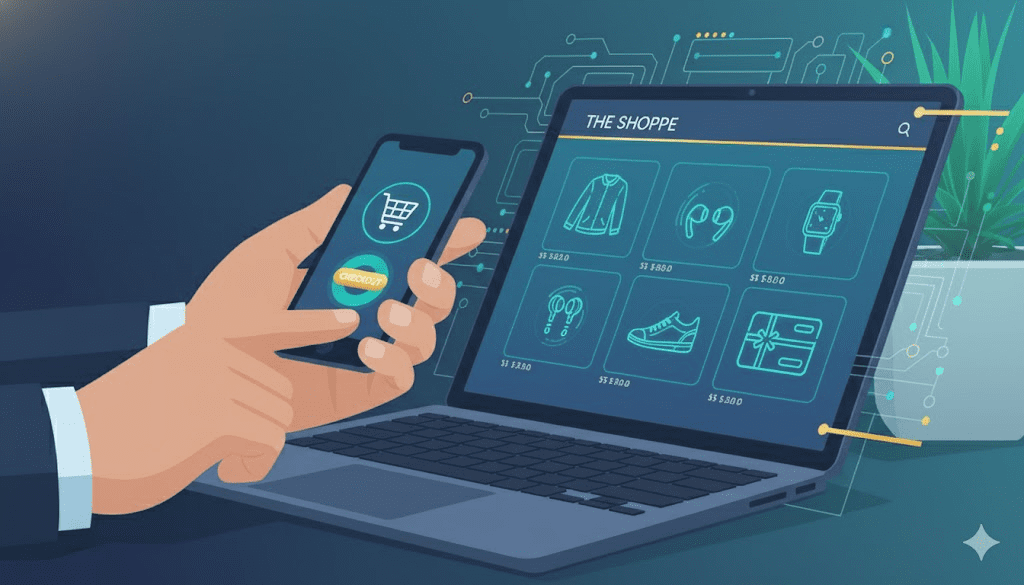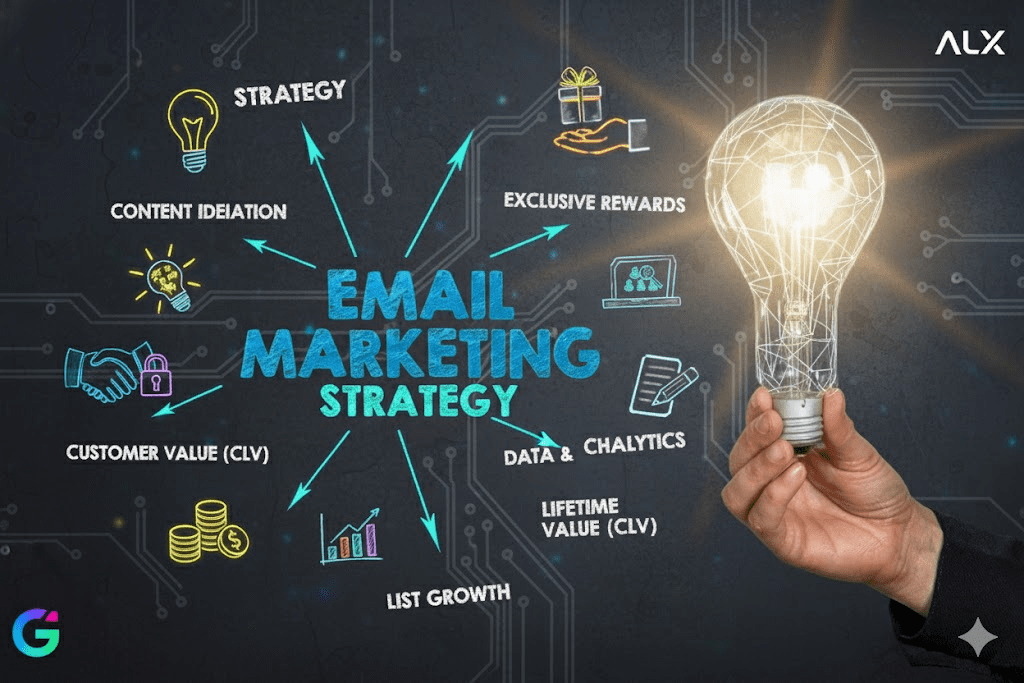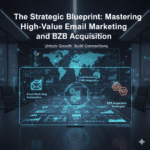Many e-commerce businesses are unknowingly setting money on fire. They focus almost all their marketing spend on the perpetually expensive chase for new customers through digital advertising, while neglecting the vast, high-potential audience already interacting with their brand. The harsh reality for the average online store is that over 90% of first-time visitors vanish forever after a single visit. This staggering statistic represents a massive, silent drain on profitability.
However, the elite, top 1% of e-commerce brands have mastered a different strategy. They recognize that the real goldmine lies in turning fleeting visitors into lifelong fans who purchase repeatedly. These brands shift their focus from mere transaction to relationship, building sophisticated flows that capture interest, earn trust, and reward loyalty.
This comprehensive guide will break down the five critical steps required to build an enduring customer base, transforming temporary traffic spikes into sustainable, profitable growth. By implementing these strategies, you can minimize customer churn, dramatically increase customer lifetime value (CLV), and build a brand that resonates far beyond a single purchase.
I. Strategic Contact Capture: Converting Visitors Before the Bounce
If a visitor leaves your site without providing their contact information, all the capital invested in acquiring that traffic is instantly wasted. Your primary mission is to secure an email address or phone number before they bounce. But in today’s crowded digital landscape, a generic “Sign up for 10% off” is no longer enough to cut through the noise. Successful brands create incentives that offer status, identity, and exclusive access.

A. Moving Beyond the Generic Discount
A simple percentage-off coupon has become an expected default, eroding its perceived value. Instead, the incentive must align with your brand’s core identity and offer a sense of belonging.
- For Streetwear and Fashion Brands: Appeal to the desire for exclusivity and scarcity. Don’t be vague with promises of “early access to our next drop.” Instead, be highly specific and aspirational. Frame the incentive around a concrete, future event: “Unlock VIP Access to the Juniper X Drop on April 21st. Exclusive products and first pick of limited sizes.” This creates anticipation and immediate, tangible value.
- For Sustainable/Ethical Brands: Offer entry to a purpose-driven community. Position the sign-up as gaining access to a “Green Members Club” or a “Conscious Collective,” where members receive exclusive content, early news on sustainable sourcing, or input on future product design. The reward is moral status and community involvement.
- For Luxury or Premium Labels: The incentive must confer status. Avoid simple price reductions. Offer access to a “VIP Members Only” private collection, special preview pricing on new arrivals, or a dedicated personal shopper contact. The discount is secondary; the feeling of being an insider is the true currency.
B. The “Skin in the Game” Pop-up Strategy
To increase the commitment level—and therefore the quality—of leads captured, some innovative brands employ an interactive pop-up strategy that requires the customer to invest a small amount of time or effort.
A platform like Aria for email (or similar sophisticated tools) allows brands to incorporate a micro-journey into the capture process. This might involve asking the customer to watch a brief, engaging video about the brand’s mission, its founders, or its production process. After the video, the pop-up asks a simple question related to the content—a test of comprehension and engagement.
This small barrier to entry is powerful. It filters out users simply hunting for a quick discount and validates the intent of those who do proceed. By expending a small amount of effort to acquire the discount, the customer places “skin in the game,” making them much more likely to value and use the resulting code. According to internal Shopify data, brands that deploy sophisticated, incentive-driven pop-ups can see their email capture rates increase by up to 200%. Once this contact information is secured, you’ve earned the permission to begin the journey of transforming a stranger into a loyal customer.
II. The Welcome Flow: The Digital Handshake That Earns Trust
Many brands treat the initial welcome email as a mere transactional formality: “Thanks for joining. Here’s your discount.” This is a monumental missed opportunity. The welcome sequence is your first, best chance to transform a lead into a paying customer. It must be a strategic, engaging digital handshake that conveys your brand’s identity and earns the customer’s trust.
An effective welcome flow, not just a single email, systematically nurtures the relationship by introducing the brand’s values, showcasing social validation, and driving urgency. This four-email sequence can boost your conversion rate by up to 80% compared to a single, generic welcome message.
A. The Essential Four-Part Welcome Flow
1. Email One: Welcome and Deliver the Offer (Immediate)
- Core Goal: Personalization and immediate gratification.
- Content: Start with a warm, genuine welcome. Immediately deliver the promised incentive (e.g., the exclusive access link or discount code). Keep the tone personal and authentic to your brand voice. Include a captivating photo, perhaps of your team in action, or an exclusive, high-quality product shot the visitor hasn’t seen on the main website or social media feed. The primary Call-to-Action (CTA) should be to “Shop Now” or “Explore the New Collection.”
2. Email Two: The Origin Story and Mission (Day 2)
- Core Goal: Emotional connection and alignment.
- Content: This is where you tell your story. Why did the brand start? What problem does it solve? What is your mission? People don’t just buy clothes; they buy the values, the feeling, and the community the clothes represent. Share the founder’s journey, the inspiration behind the design, or the brand’s commitment to an ethical cause. The aim is to create an emotional investment that goes beyond price.
3. Email Three: Social Proof and Credibility (Day 3-4)
- Core Goal: Build instant trust and demonstrate desirability.
- Content: Showcase evidence that others trust and love your brand. This includes customer photos (User-Generated Content or UGC), powerful testimonials, or features from influencers. This external validation acts as a powerful psychological trigger. When a potential customer sees real people wearing and loving your product, it immediately builds credibility and reduces the perceived risk of purchase.
4. Email Four: Urgency and Final Reminder (Day 5)
- Core Goal: Drive the initial purchase with a time-bound incentive.
- Content: Create a low-pressure, high-value reason to buy now. This could be a 24-hour offer of free shipping or a “Last Chance” reminder that their exclusive welcome discount code is expiring soon. The urgency must feel authentic and not manipulative. The tone should convey helpfulness—reminding them not to miss out on the valuable offer they earned.
B. Making it a Conversation, Not a Pitch
A subtle yet powerful tactic employed by the most successful brands is making their emails feel like a genuine dialogue. Set up the reply-to address to a real person’s inbox, and encourage conversation. Include a small, personalized line at the bottom, such as: “P.S. I actually read these emails. Hit reply if you have a question!” When customers do reply, ensure your team responds promptly and personally. This crucial step humanizes the brand and is often the very beginning of lasting customer loyalty.
III. The Post-Purchase Flow: Doubling Down on Connection
The moment a customer makes a purchase is the most critical juncture in the entire customer journey. The sale isn’t the finish line; it’s the starting gun for retention. The customer is emotionally invested—they have committed to your brand, especially if you are a newer business without extensive social proof. This is when you must double down on connection and exceed expectations.
The post-purchase flow must move beyond dry, transactional updates to become an engaging extension of your brand experience.
A. The Three Essential Post-Purchase Emails
1. Order Confirmation (Immediate)
- Go Beyond Transactional: Use this opportunity to offer a genuine welcome to the “family” or “community.” Thank them by name. If your brand has a mission, briefly tell them what their purchase supports (e.g., “Your new hoodie funds five meals for shelter animals.”). Use your brand’s unique tone and include a small message of excitement.

2. Shipping Notification (When Shipped)
- Make it Fun: Replace the generic “Your order has shipped” with branded excitement. For a fashion brand, this could be: “Your New Fit is on the Way! Get ready to turn heads.” Maintain your brand’s voice and make the tracking link feel like the final, exciting step toward delivery.
3. Product Arrival and Follow-Up (Day After Delivery)
- The Golden Ticket: This email is a powerhouse for future retention.
- Care Instructions: Share instructions on how to care for their product to ensure longevity, positioning the brand as a helpful expert.
- Social Invitation: Politely ask them to tag your brand on social media or share a photo of their new item, directly feeding your User-Generated Content (UGC) engine.
- Next Purchase Incentive: Offer a small, time-limited discount or free shipping code for their next order. Crucially, the code should be framed as a “Thank You” or “Family Discount,” reinforcing their new status as a valued customer.
A study conducted by retention platforms like Klaviyo revealed that brands with a highly engaging and personalized post-purchase flow experience repeat purchase rates that are 60% higher within 60 days of the initial purchase compared to brands with standard, dry transactional emails.
B. Adding the Surprise Element
To elevate the brand experience and make it truly unforgettable, add a small, inexpensive surprise to the physical package. These small efforts create massive loyalty:
- Handwritten Notes: A quick, authentic handwritten “Thank You” note (even if only one sentence) in the box makes the transaction feel deeply personal.
- QR Code Experience: Include a QR code linking to an exclusive “Thank You” video from the founder or the team, a behind-the-scenes look at the production, or a playlist tailored to the new product.
- Branded Stickers/Small Gifts: A small, high-quality, branded gift or sticker adds value without significant cost.
IV. The Loyalty Engine: Turning Buyers into Insiders
This is the phase that separates the amateurs from the pros. While amateurs constantly chase expensive new customers, professionals recognize that repeat buyers spend an average of 67% more per order than first-time buyers. They already know your quality, trust your process, and value your post-purchase experience. The focus shifts entirely to building a loyalty and rewards program that fosters a deep sense of belonging and exclusivity.
A truly effective loyalty program must go beyond a generic “points for purchases” system; it must transform the customer into an **insider**.

A. Building a Personalized and Exclusive Program
1. Inject Personality into Tiers
Avoid the generic Bronze, Silver, Gold structure that every retail chain uses. Instead, brand your loyalty tiers to reflect your identity. For a streetwear or sports apparel brand, try: “Rookie,” “OG (Original Gangster),” and “Legend.” This makes the progression feel like an achievement within the brand’s narrative.
2. Reward Actions Beyond Spending
Customers are engaged even when they’re not ready to buy. Reward them for activities that fuel your growth and marketing engine. Use loyalty platforms like Smile.io or LoyaltyLion to assign points for:
- Writing product reviews.
- Refer a friend (which generates a new lead).
- Following your social media channels.
- Posting User-Generated Content (UGC) while wearing the product.
- Subscribing to SMS updates.
This strategy keeps customers highly engaged and emotionally invested without requiring them to spend money on every interaction.
3. Create True Exclusivity
The ultimate reward is status and access. Ensure your VIP tiers receive perks that money can’t buy:
- Early Access: Give VIP members a 24-48 hour head start on all new drops and collections.
- Secret Sales: Host exclusive sales visible only to the highest tiers.
- Limited Edition Merch: Offer products or digital items (like exclusive branded wallpapers or digital content) that are available only to specific loyalty tiers.
Brands like Gymshark exemplify this mastery, offering their loyalty customers not just discounts, but early access and exclusive merch that makes them feel part of an elite fitness movement, securing unparalleled long-term devotion.
4. Varying the Rewards Mix
While discounts are easy, think creatively about your rewards to maintain interest:
- Cashback: Offer a percentage of spending back in store credit or actual cash back after a certain threshold.
- Service Perks: Offer free shipping perpetually to all top-tier members.
- Experiential Rewards: Exclusive shout-outs on your social media, personalized birthday messages, or invitations to special community events.
V. Consistent Engagement: The ‘Always On’ Strategy
Even the most loyal customer will drift away if your brand fades from their world. The final, continuous step is maintaining a pervasive, valuable, and non-intrusive presence across multiple channels. You must appear to be everywhere your customer is, ensuring your brand is top-of-mind the moment they consider a new purchase.
A. Multi-Channel Presence and Content Diversity
1. Email Marketing: Beyond the Promotion
Your email strategy must evolve past simple discount codes. Mix your communications to be 80% value/storytelling and 20% promotion.
- Storytelling: Share behind-the-scenes looks at your studio, factory, or design process.
- Style Tips: Offer seasonal styling guides, outfit pairings, or tutorials on how to wear your products.
- Community Highlights: Feature a “Customer Spotlight” or share inspirational content related to your brand’s mission. The goal is to make opening your emails an anticipated part of the customer’s routine.

2. Strategic SMS Updates
Use SMS sparingly and only for high-value, time-sensitive information, keeping the messages personal and concise.
- Restock Alerts: Send SMS alerts for product restocks that the customer previously showed interest in.
- VIP Drops: Reserve SMS for the most exclusive early access notifications for your top loyalty members.
- Personalized Thank Yous: Send a quick, personal “Thank you for being a part of our community” text on a quiet day, simply to reinforce the relationship.
3. Social Media as a Community Engine
Use your social presence primarily to celebrate your community, not just to advertise.
- UGC as Content: Re-post customer photos and tag them publicly. Highlight their stories and celebrate them. Data shows that 79% of customers say that UGC significantly impacts their purchase decision, making it a crucial engine for both trust and FOMO (Fear of Missing Out).
- Public Recognition: Publicly recognizing and celebrating your customers—whether through a “Fan Friday” post or reposting their outfit photos—is one of the most powerful loyalty triggers available. It transforms a consumer into an active participant in your brand’s success.
By continuously nurturing the audience captured in Step I, welcomed in Step II, delighted in Step III, and rewarded in Step IV, you establish a consistent, sticky relationship. This continuous presence ensures that your brand remains the default choice, dramatically reducing reliance on high-cost advertising and fueling a robust, profitable repeat-buyer base.
VI. Conclusion: The Profitability of Prioritizing People
The most profound realization for high-growth e-commerce brands is that the most lucrative marketing strategy is not aimed at acquisition, but at retention. The path to scalable, profitable growth does not lie in perpetually increasing advertising budgets, but in strategically converting one-time visitors into repeat buyers and devoted fans.
By systematically implementing a strategy focused on customer lifetime value (CLV)—beginning with offering a compelling, identity-aligned incentive to capture contact information, following through with an emotionally rich four-part welcome flow, exceeding expectations with a thoughtful post-purchase experience, and solidifying the relationship with a tiered, experience-based loyalty program—you fundamentally shift your business model. You move from the instability of transactional sales to the resilience of relationship-based commerce. The secret to the top 1% of e-commerce profitability is simple: **They prioritize people over pixels.** By making every touchpoint personal, valuable, and consistent, you stop losing money from existing customers and start building an unforgettable brand that grows itself.






